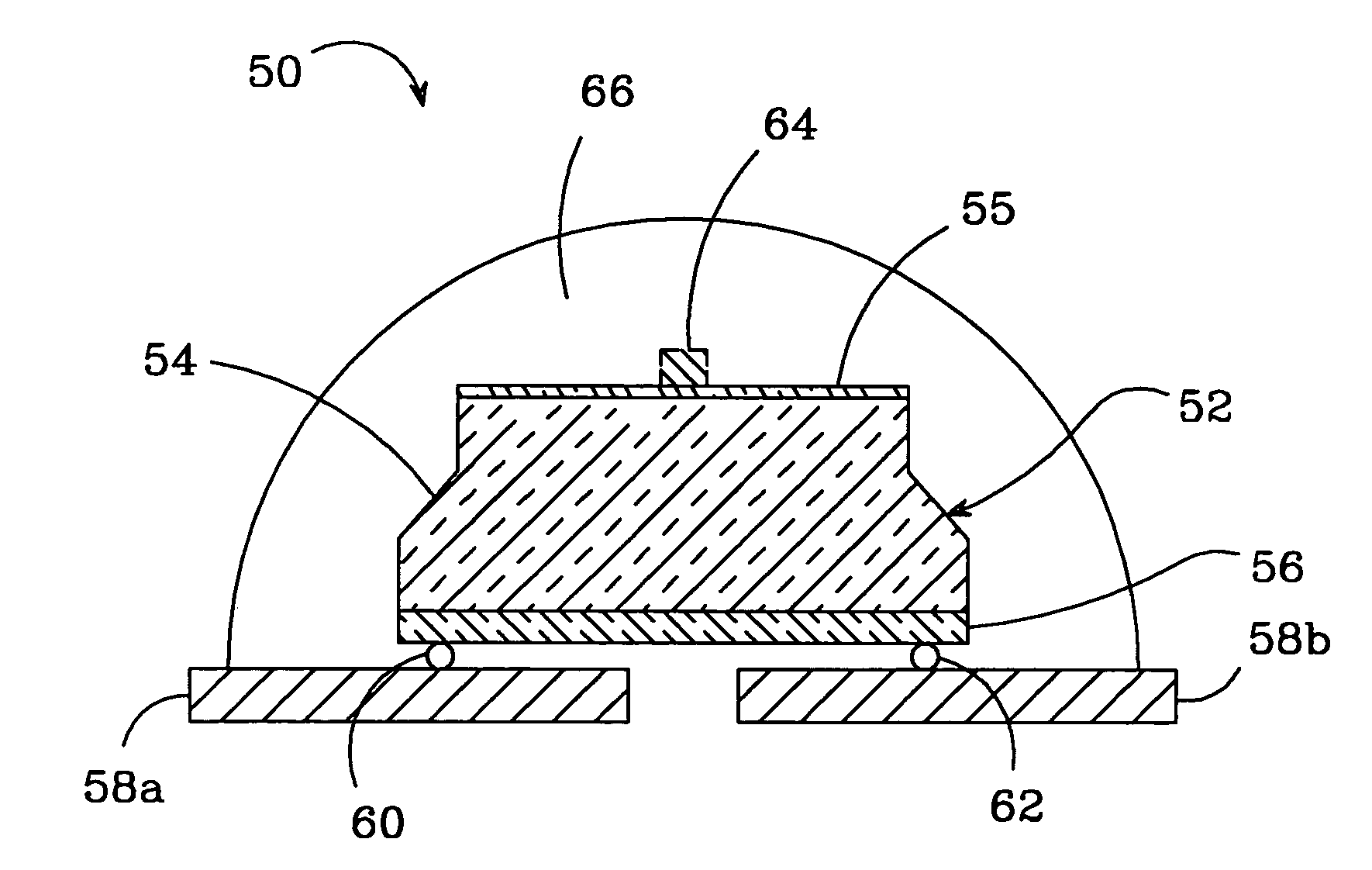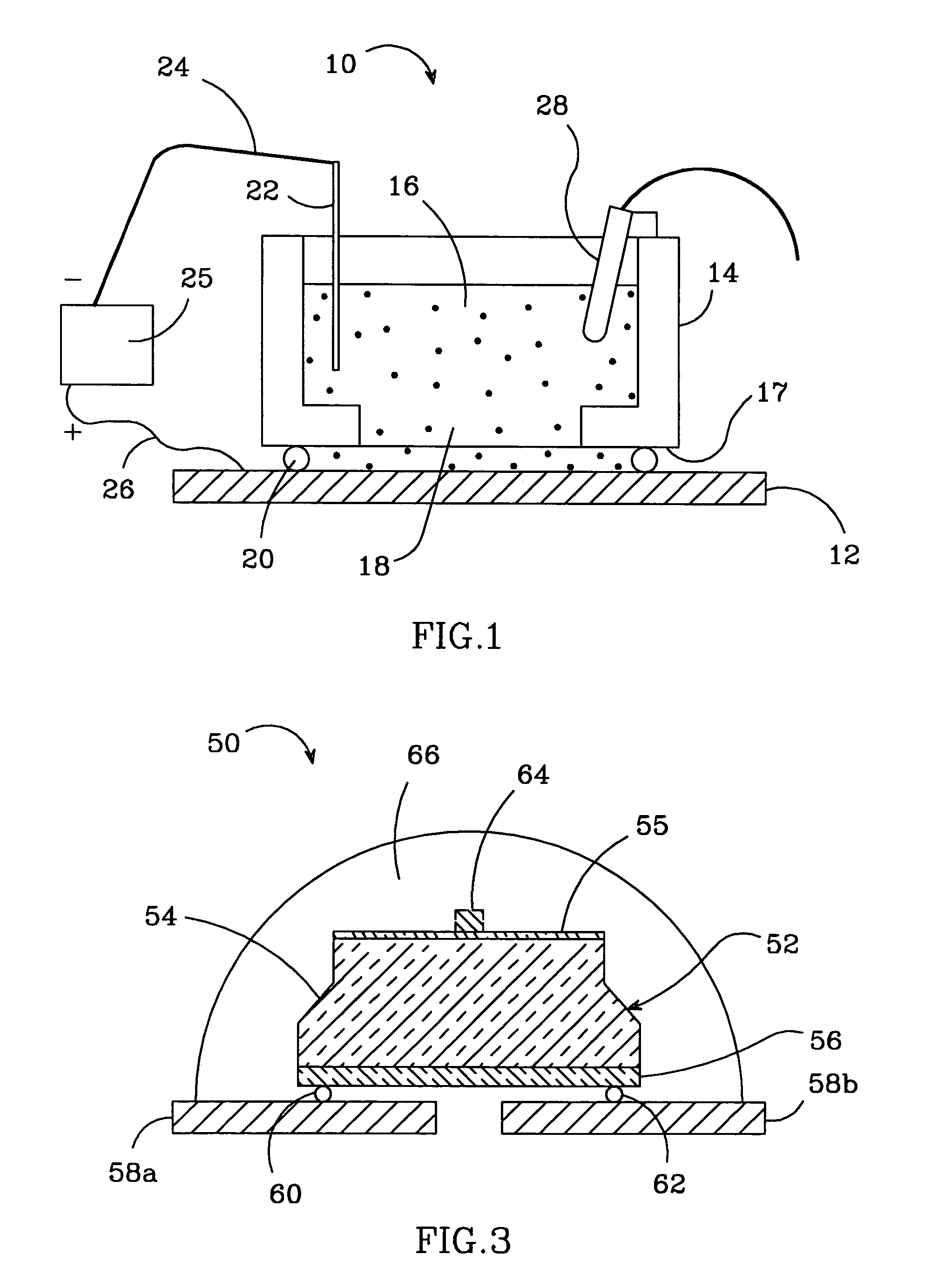Light emitting diode with porous SiC substrate and method for fabricating
a technology of light-emitting diodes and sic substrates, which is applied in the direction of basic electric elements, semiconductor devices, electrical equipment, etc., can solve the problems of limited external quantum efficiency, difficult to create a useful roughened surface, and the emission region formed of a sic substrate cannot include useful roughened surfaces on the sic substrate to enhance light extraction, etc., to achieve the effect of improving the extraction of led ligh
- Summary
- Abstract
- Description
- Claims
- Application Information
AI Technical Summary
Benefits of technology
Problems solved by technology
Method used
Image
Examples
Embodiment Construction
Aparatus and Method for Forming Porous Layer
[0024]FIG. 1 shows one embodiment on an apparatus 10 according to the present invention for forming a porous layer on the surface of a semiconductor material 12, with the apparatus 10 preferably used to form a porous layer on the surface of silicon carbide (SiC). The apparatus 10 includes a cup shaped reservoir / housing 14 holding a liquid HF-based electrolyte 16 that can comprise different solutions in different concentrations. A suitable solution for the electrolyte 16 comprises ethanol (C2H5OH) and water, with ethanol in a concentration range of a 10 to 50%. Another suitable solution comprises a buffered HF-based electrolyte that provides for a more constant Ph value over time and provides for a solution that is less volatile and less dangerous to work with. A preferred buffered HF-based electrolyte comprises ammonium fluoride (NH4F) and water, with the NH4F having different concentrations such as 20% per volume.
[0025]The semiconductor 1...
PUM
| Property | Measurement | Unit |
|---|---|---|
| External Quantum Efficiency | aaaaa | aaaaa |
| voltage | aaaaa | aaaaa |
| voltage | aaaaa | aaaaa |
Abstract
Description
Claims
Application Information
 Login to View More
Login to View More - R&D
- Intellectual Property
- Life Sciences
- Materials
- Tech Scout
- Unparalleled Data Quality
- Higher Quality Content
- 60% Fewer Hallucinations
Browse by: Latest US Patents, China's latest patents, Technical Efficacy Thesaurus, Application Domain, Technology Topic, Popular Technical Reports.
© 2025 PatSnap. All rights reserved.Legal|Privacy policy|Modern Slavery Act Transparency Statement|Sitemap|About US| Contact US: help@patsnap.com



